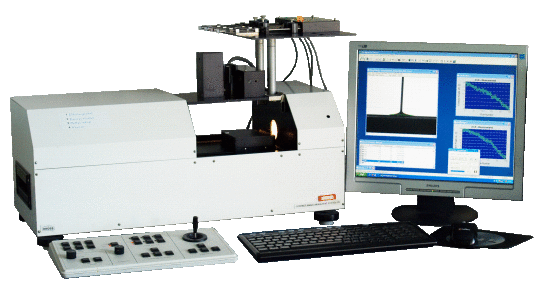
The dynamic contact angle (dCA) yields information on the wetting and de-wetting behavior of a surface. Furthermore, knowledge of CA and wetting behavior allow us to draw conclusions on the surface topography. Additionally, for a good coating procedure also the surface tension of the used coating solvent, which can be deduced from dCA investigations, plays an important role.
The dynamic contact angle technique is characterized by the advancing and receding angles of a moving three-phase boundary. In dCA, the difference between these two angles is measured. The advancing contact angle and receding contact angle themselves determine the wettability, and the resulting hysteresis yields information on the chemical and topographical heterogeneity of the surface. SuSoS uses the drop-shape method, in which a liquid droplet is placed onto the surface. As the droplet volume is increased, the advancing contact angle can be determined. Likewise, the receding contact angle can be measured by observing the drop shape while decreasing its volume. Furthermore, the surface tension of any liquid can be determined from its drop shape.
Benefits of this analyzing technique
- Measuring wettability and surface energy
- Gaining information on surface topography
- Simulating / modelling dynamic coating processes
- Measuring the surface tension of liquids
Materials and Dimensions
- Smooth and structured surfaces
- Metals, polymers, fibers, textiles, liquids, etc.
- Sample size: 15 x 15 cm; height max. 2 cm
Contact us – and fathom new aspects of the properties of your product!

